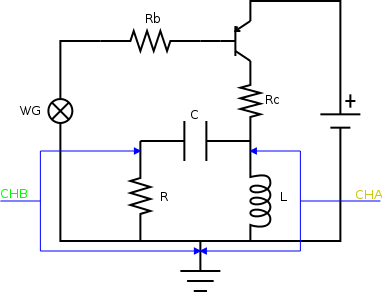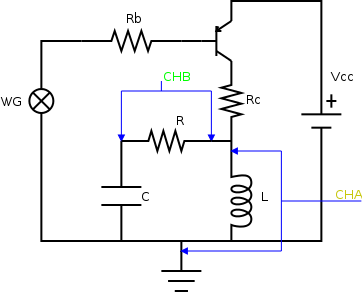

Almost all oscilloscopes have single ended inputs
This means all channels measure voltages relative to a shared reference point which is almost always ground.
To understand the implications we need to understand what voltage measurement is. Voltage is defined as the electrical potential difference between two points. Making a voltage measurement therefore means measuring the difference in electrical potential between two points.
To see why an oscilloscope with single ended inputs (and a shared reference) imposes a serious constraint on the types of measurement that can be made, consider a tank circuit.
The measurements we seek to make are of voltage across the inductor (L) and the voltage across the resistor (R). The topology of this particular circuit makes this possible with a normal oscilloscope because both components share a common reference and this reference happens to be ground. What if the circuit was such that this was not possible?

Consider the same tank circuit but with the capacitor (C) swapped with the resistor (R). The operation of the circuit is the same but in this case it's not possible to use a normal scope with single ended inputs to make both measurements.
While it's true that both measurements still share a common connection point (between R and L) it's not ground (as required by normal single-ended scope inputs).
Put another way, because the CHA measurement is already referenced to ground the CHB measurement must be also but this is impossible because connecting the ground to either side of R will short-circuit either L or C breaking the tank circuit.
There are some tricky ways around this. For example, one could use CHB to measure the voltage across R and L (i.e. relative to ground) and subtract the CHA measurement (using the B-A display mode) to calculate the voltage across R but this only works if the two channels share a connection point and it's often inaccurate and subject to noise, especially if R is small (due to the relative small voltage across R).
If you need to measure the voltage across different components in a circuit where one or more of these components are not connnected to ground, you need to make differential measurements and for this you'll need a differential probe such as PRB-06 (shown here).
This probe is ideal for use with BitScope when working with higher voltages such as one might find in power supplies, inverters, motor drives and so on, but it's not very useful for small signals or if you're using a mixed signal scope like BitScope Mini without BNC inputs. To make differential measurements possible with this little BitScope (or indeed any BitScope) we've designed a unique high performance active differential probe which connects via BitScope's POD based analog inputs.
Called DP01, it's designed for low voltage applications including many communications systems, current loops, audio circuits and general electronics. It has a common mode range of ±13.8V and a differential measurement range up to 12V. It's powered by BitScope and operates in addition to the (single-ended) BNC inputs (on BitScope models that have these inputs).
There are oscilloscopes on the market that already have differential inputs and you might think that this would be the most useful solution; tying one side of the input to ground reverts the input to be single ended or using both sides provides the full benefits of differential use. However, such a solution is not as simple as it seems because standard probes will not work with differential scope inputs. Even probes like PRB-06 won't work. This is why BitScope uses single-ended BNC inputs and probes like PRB-06 higher voltage differential measurements.
For low voltage work the choice is more limited, quite expensive and usually bulky. This is why we designed DP01. Using this low cost little probe you can still use regular oscilloscope probes (via the BNC inputs on BitScopes that have them) but you have the benefits of differential channels when DP01 is connected via BitScope's POD inputs.